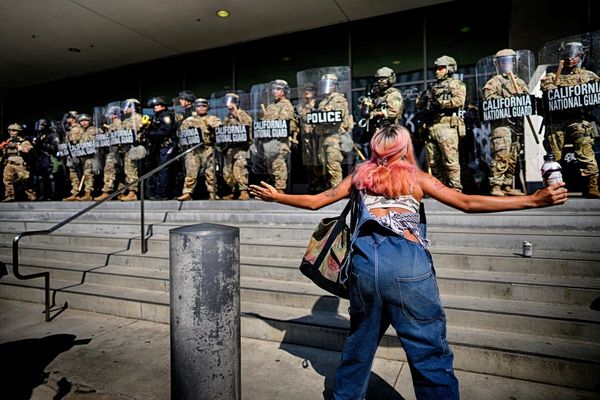
U.S.-India held a virtual 2+2 Intersessional Dialogue on Monday, discussing a wide range of topics and exploring ways to enhance cooperation, as Trump’s 50% tariffs take effect on Wednesday.
US-India Discuss Defense, Trade, Regional Security
The dialogue, co-chaired by Bethany P. Morrison, Senior Bureau Official for the U.S. Bureau of South and Central Asian Affairs, and Jedidiah P. Royal, Acting Assistant Secretary of Defense for Indo-Pacific Security Affairs, saw the participation of senior officials from both countries. The Indian delegation was led by Nagaraj Naidu Kakanur, Additional Secretary of the Ministry of External Affairs and Vishwesh Negi, Joint Secretary of the Ministry of Defense.
The talks addressed regional security updates, trade and investment partnerships, energy security, civil nuclear cooperation, critical minerals exploration, and efforts in counterterrorism and counternarcotics.
Officials looked to finalize a new ten-year U.S.-India defense framework while boosting cooperation in defense, technology, operations, regional engagement, and information sharing.
This dialogue was the first official-level meeting since the U.S. administration imposed tariffs on Indian goods on August 6. The ongoing engagement between the two nations, despite the tariffs, underscores the carefully built institutional cooperation.
Meanwhile, reports suggest that India’s Prime Minister, Narendra Modi, is expected to meet U.S. President Donald Trump in September to discuss trade and tariffs.
Trump's Tariffs Could Cost India $36 Billion In GDP
The dialogue comes in the wake of the U.S. imposing tariffs on Indian goods, which is estimated to impact $48.2 billion worth of exports, as the U.S. is India’s largest export destination.
The new duties could make shipments to the U.S. commercially unviable, potentially leading to job losses and slower economic growth in India. The U.S. has, however, exempted sectors like pharmaceuticals and electronics from extra tariffs.
Teresa John, lead economist, Nirmal Bang Institutional Equities, told Reuters that Trump tariffs could have an impact of $36 billion or 0.9% of India’s annualised GDP.
The Indian government has begun working on reforms to boost local consumption and insulate the economy. This includes changes to the goods and services tax, or consumption tax and financial incentives, including favorable bank loan rates for exporters. Additionally, Latin America, Russia, the EU, Africa and Southeast Asia are also being considered as alternative export destinations.
US-India Stand To Lose In the Trade Impasse, Say Economists
Trump accused India of helping Russia by buying discounted oil and "fuelling the war machine", hence increasing the tariff rate to 50%. Meanwhile, while ING's Warren Patterson questioned whether risking $87 billion in U.S. exports was worth the oil discount gains for India.
On the other hand, economists like Peter Schiff warned that Trump's move to double tariffs on Indian imports could "expose the U.S. consumer as a paper tiger," with predictions of a dollar crash that would "impoverish Americans but enrich foreign consumers, particularly the BRICs."
READ MORE:
Image via Shutterstock
Disclaimer: This content was partially produced with the help of AI tools and was reviewed and published by Benzinga editors.







